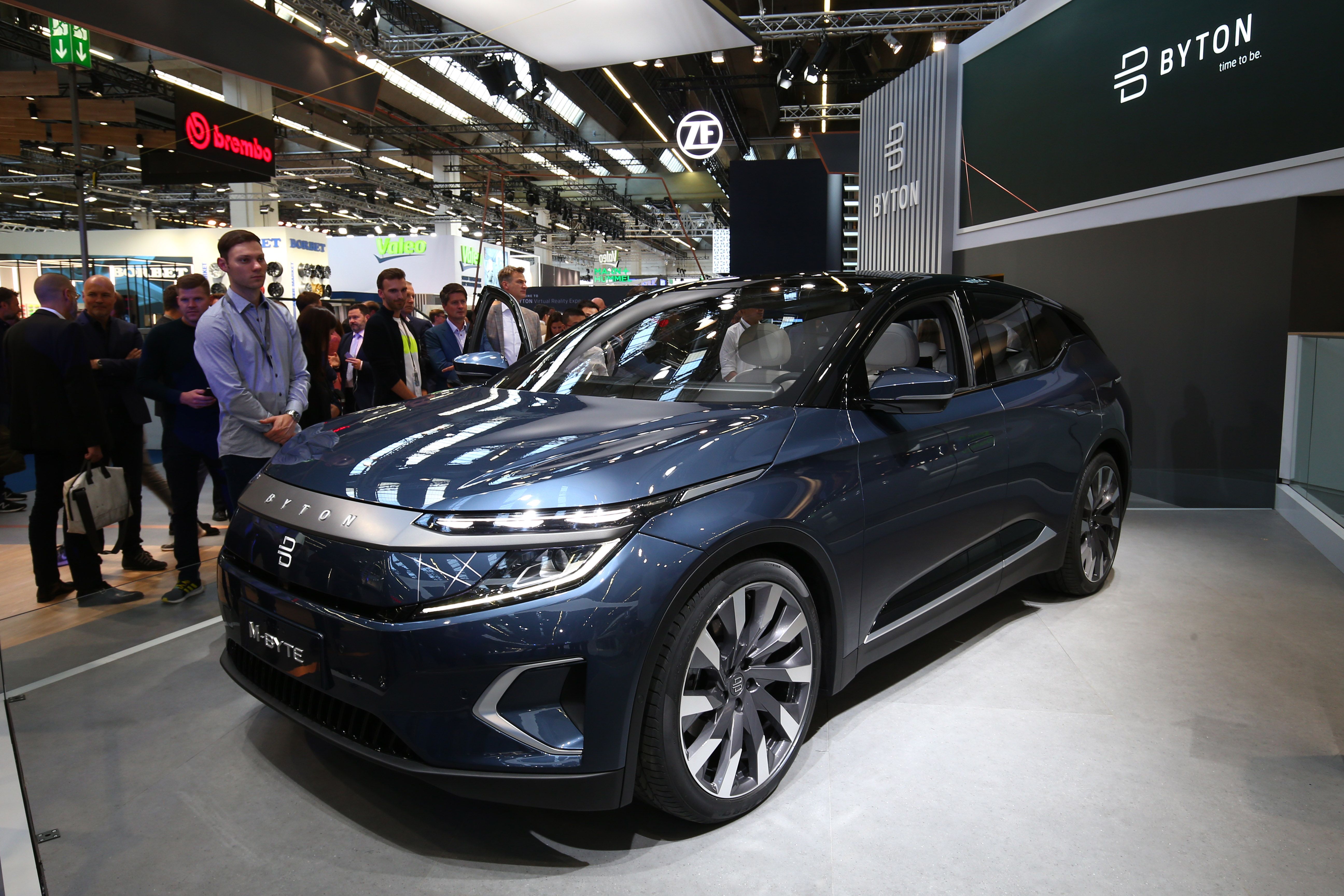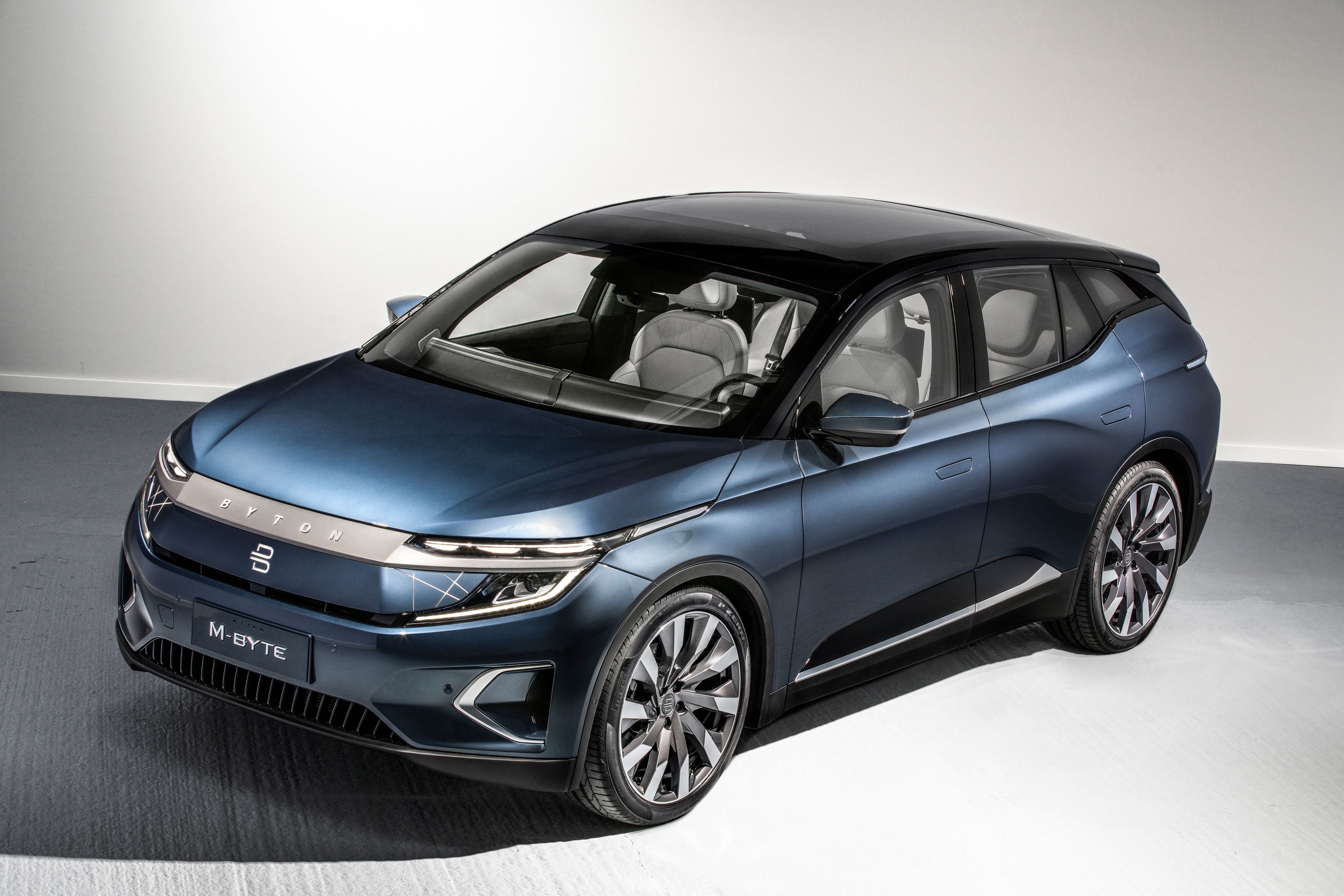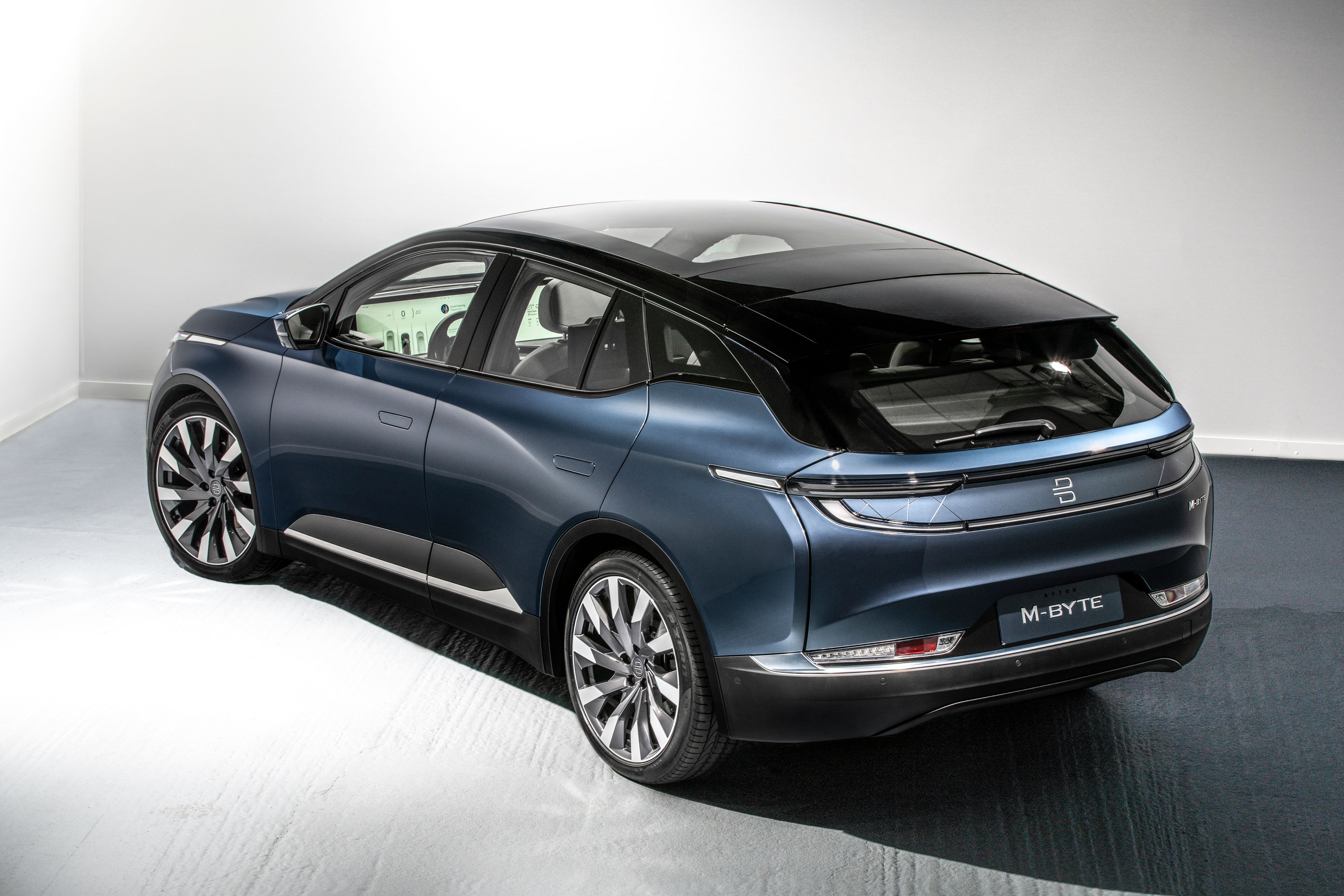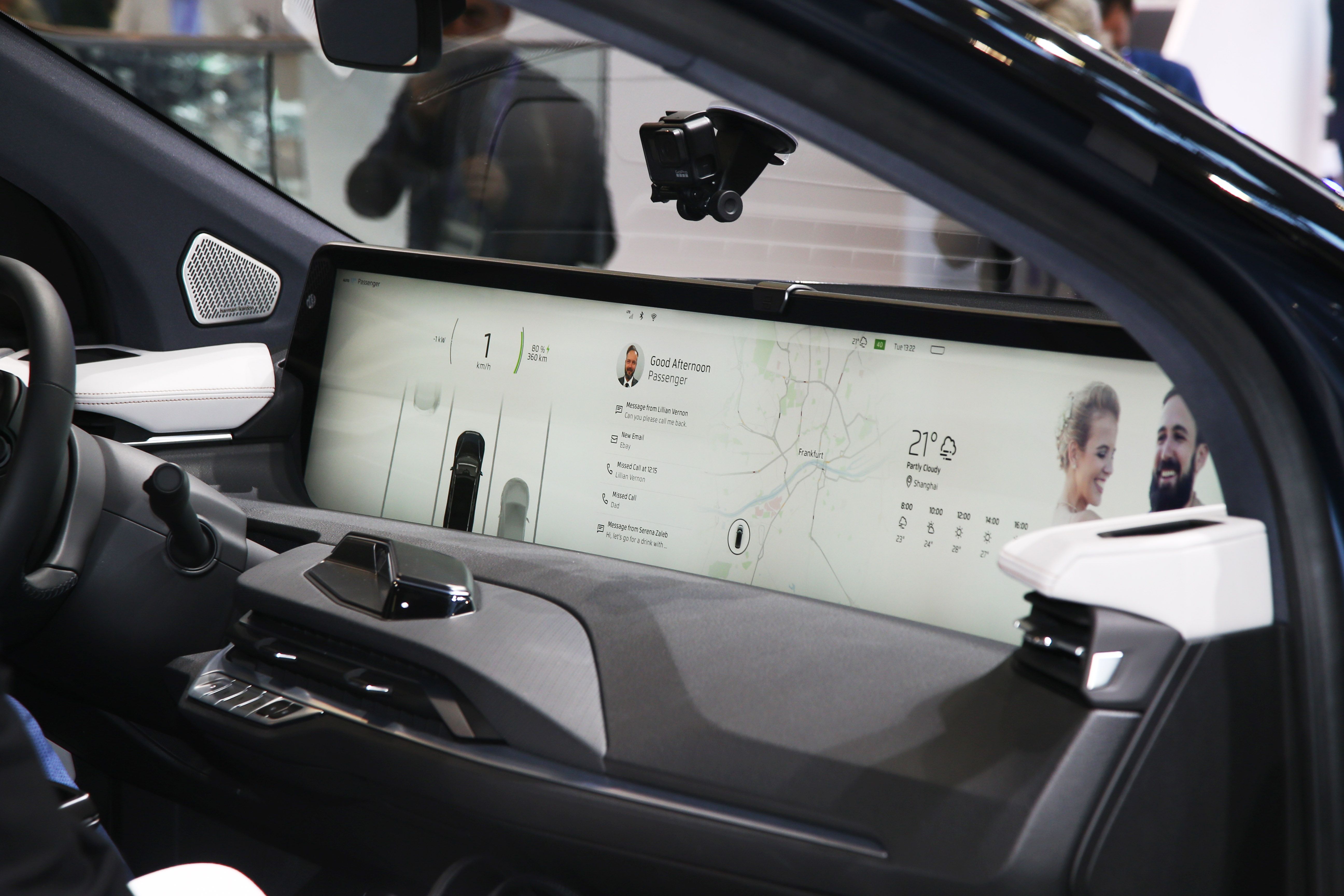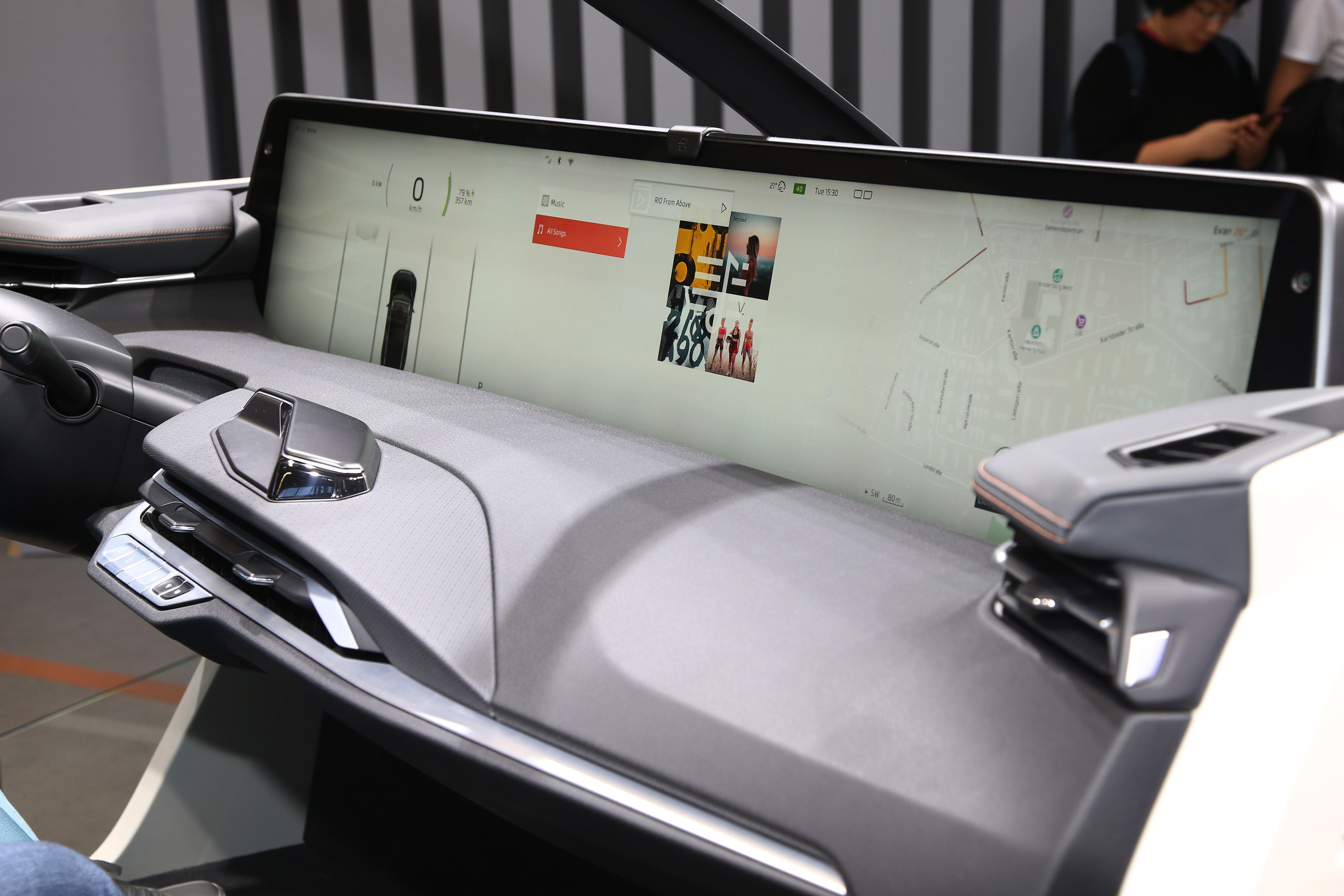Byton has kept the series-production version of the M-Byte all-electric SUV very similar to the concept that previewed it. It can’t really be said that either its exterior design or interior has been toned down for production - the latter still sports the crazy 48-inch curved display that was shown in the design study.
The 2020 Byton M-Byte is an important car, although because it doesn’t come from an established manufacturer, it didn’t receive as much attention as it deserved at its 2019 Frankfurt motor show debut. But here are the headline facts: it’s a brand new premium all-electric SUV (with a fastback-style roof), and it has a gigantic infotainment screen that dwarfs all other infotainment screens (and it’s just the main attraction of the cavernous and surprisingly well-appointed interior).
What’s Under 2020 Byton M-Byte’s Skin?
The Byton M-Byte will be available with two battery packs: a smaller 72 kWh pack that will provide a maximum claimed range of 360 kilometers (224 miles) and a larger 95 kWh pack whose claimed range is 435 km (269 miles). These are all estimates based on the WLTP test cycle, and you can expect them to shrink when the car is tested according to the EPA’s guidelines in the United States.
Two powertrain choices will be offered. It can be had as a rear-wheel drive-only model, with a rear-mounted motor that makes 270 horsepower and 400 Nm (295 pound-feet) of torque or as an all-wheel drive model with dual motors that produce 402 horsepower and considerably more torque.
Byton says that even though the M-Byte is an SUV, its low-slung design actually results in a pretty good drag coefficient.
The 2020 Byton M-Byte looks almost exactly the same as the concept that previewed it
Byton made only minor changes to the M-Byte in its transition from design study to production vehicle. The body itself looks identical to the concept and what has changed is the design of the headlight and rear light clusters, some bumper details, the door handles, and the rear-view cameras, the latter of which have been replaced with traditional mirrors. That’s literally it
This vehicle is all about its interior, though, and even here, most of what was shown on the concept was kept. We simply must talk about the 48-inch screen, which is curved extends all the way across the width of the dash. Its designers call it a “shared” display, because there was no better way to describe it - that’s really what it is.
And, it’s not the only display.
There will be several ways in which users will be able to interact with the car. The driver can use the smaller touchscreen and the buttons around it, and both front occupants can use gesture control. There is a third screen mounted flat in between the two front seats, and this screen is designed to be used especially by the passenger and not the driver (since it would require the driver to look down).
Another feature the M-Byte has that no other car on sale today has are rotating front seats. Yes, that’s right, the two front seats rotate inward about 10 degrees in order to make conversations between the front two occupants easier and more natural. This feature ties in with the car’s autonomous driving functions (which have not been fully detailed yet) because otherwise it will result in a slightly bent driving position.
When Does the 2020 Byton M-Byte Go On Sale and How Much Does it Cost?
Byton plans to commence series production of the M-Byte luxury electric crossover at its facility in Nanjing, China early next year with first Chinese deliveries expected to begin in mid-2020 (apparently, they have some 50,000 reservations in the PRC). The following year, in 2021, the company intends to make the model available for European and North American buyers, but it has yet to begin taking pre-orders for these markets.
The price for a base 2020 Byton M-Byte is expected to start at around €45,000 or around $50,000.
Further reading
Byton's New Touchscreen Will Put Tesla to Shame in More Ways Than One
Read our full review on the 2019 Byton Concept EV.

